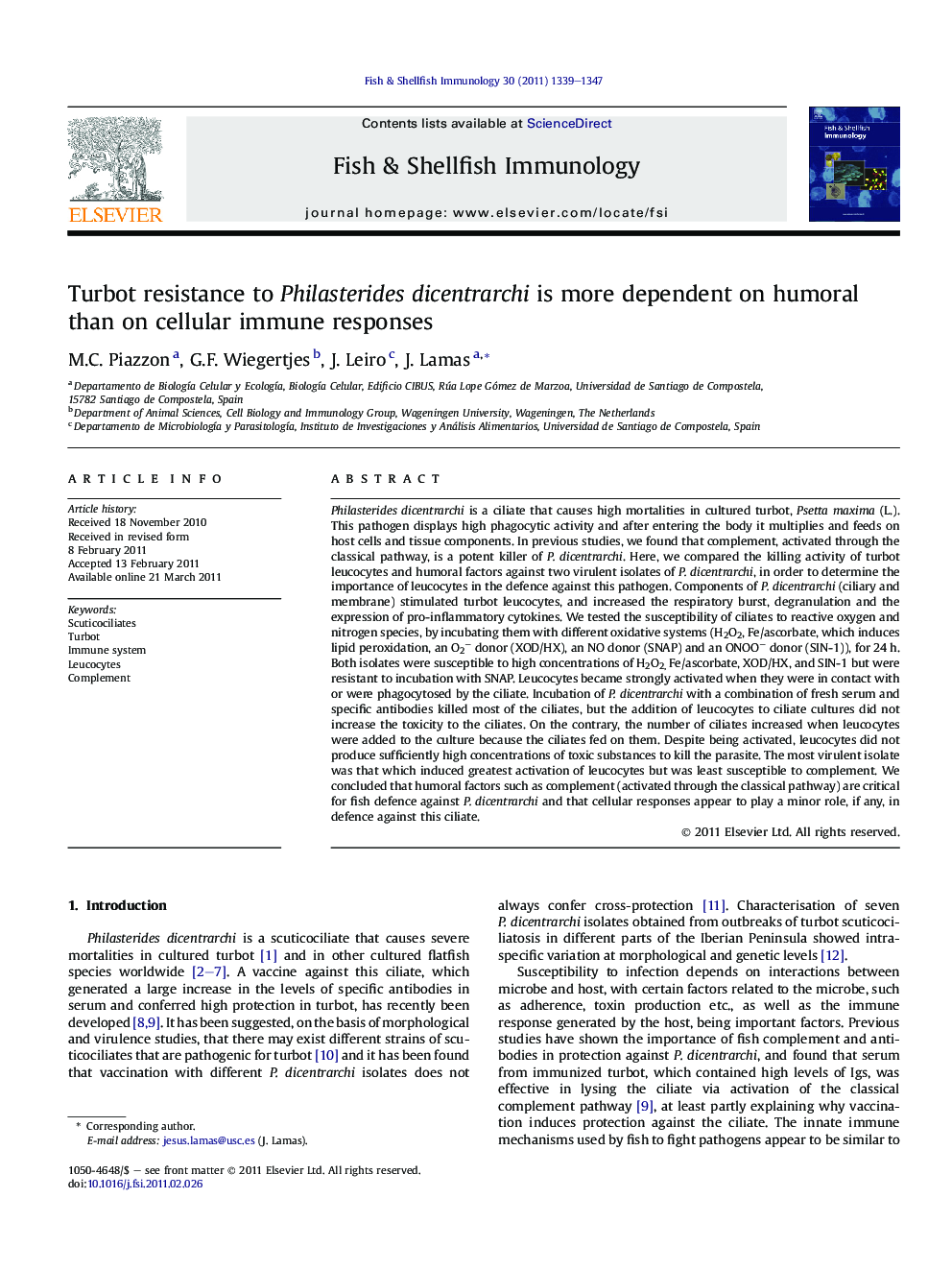| Article ID | Journal | Published Year | Pages | File Type |
|---|---|---|---|---|
| 2432114 | Fish & Shellfish Immunology | 2011 | 9 Pages |
Philasterides dicentrarchi is a ciliate that causes high mortalities in cultured turbot, Psetta maxima (L.). This pathogen displays high phagocytic activity and after entering the body it multiplies and feeds on host cells and tissue components. In previous studies, we found that complement, activated through the classical pathway, is a potent killer of P. dicentrarchi. Here, we compared the killing activity of turbot leucocytes and humoral factors against two virulent isolates of P. dicentrarchi, in order to determine the importance of leucocytes in the defence against this pathogen. Components of P. dicentrarchi (ciliary and membrane) stimulated turbot leucocytes, and increased the respiratory burst, degranulation and the expression of pro-inflammatory cytokines. We tested the susceptibility of ciliates to reactive oxygen and nitrogen species, by incubating them with different oxidative systems (H2O2, Fe/ascorbate, which induces lipid peroxidation, an O2− donor (XOD/HX), an NO donor (SNAP) and an ONOO− donor (SIN-1)), for 24 h. Both isolates were susceptible to high concentrations of H2O2, Fe/ascorbate, XOD/HX, and SIN-1 but were resistant to incubation with SNAP. Leucocytes became strongly activated when they were in contact with or were phagocytosed by the ciliate. Incubation of P. dicentrarchi with a combination of fresh serum and specific antibodies killed most of the ciliates, but the addition of leucocytes to ciliate cultures did not increase the toxicity to the ciliates. On the contrary, the number of ciliates increased when leucocytes were added to the culture because the ciliates fed on them. Despite being activated, leucocytes did not produce sufficiently high concentrations of toxic substances to kill the parasite. The most virulent isolate was that which induced greatest activation of leucocytes but was least susceptible to complement. We concluded that humoral factors such as complement (activated through the classical pathway) are critical for fish defence against P. dicentrarchi and that cellular responses appear to play a minor role, if any, in defence against this ciliate.
